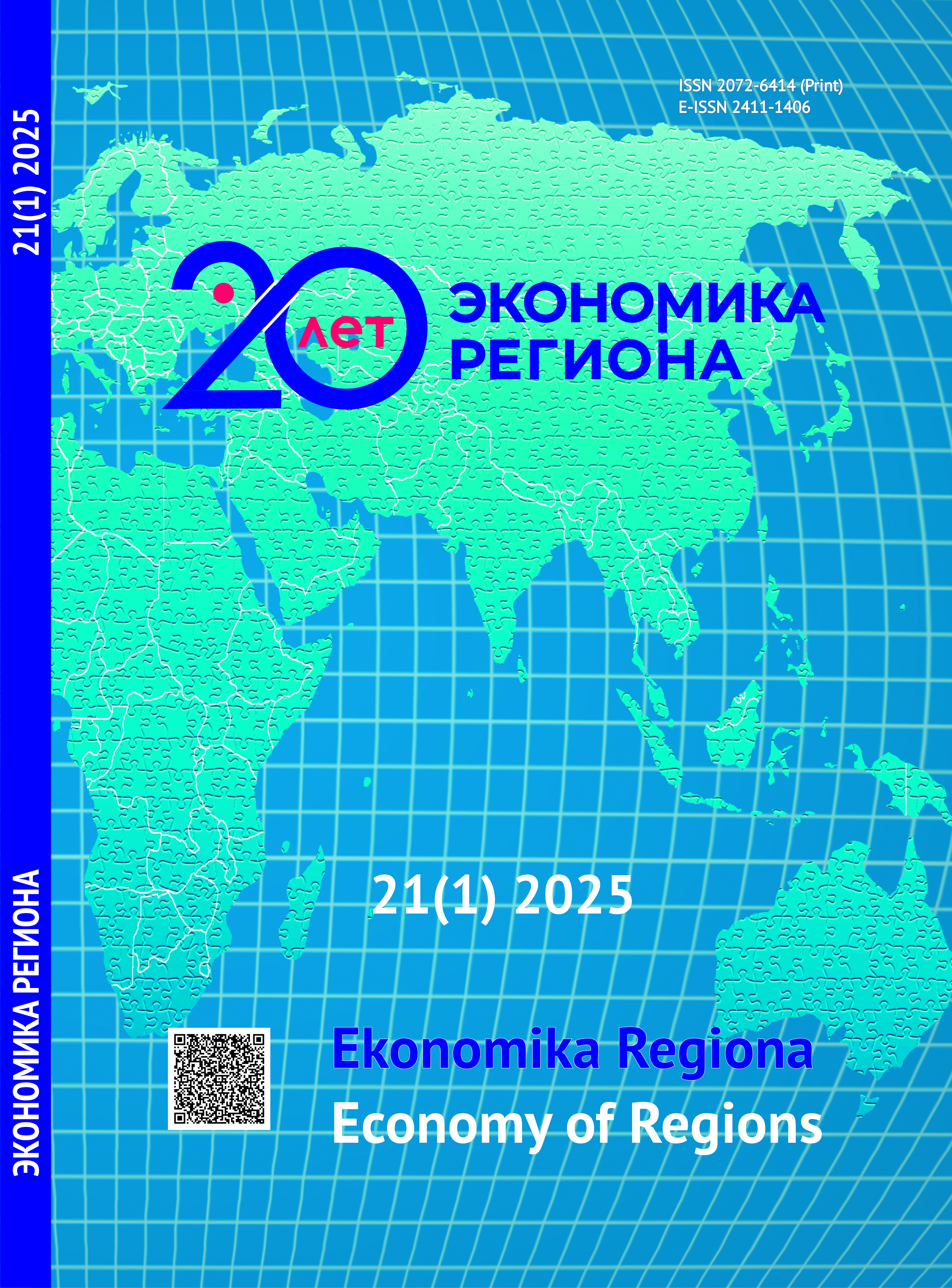Связь динамики общей факторной производительности с возрастной структурой населения регионов России
DOI:
https://doi.org/10.17059/ekon.reg.2025-1-9Ключевые слова:
метод остатка Солоу, двойственный метод остатка Солоу, общая факторная производительность, возрастная структура населения, пространственная корреляция, модели пространственной эконометрики, регионы РоссииАннотация
В современном обществе старение населения становится одной из наиболее значимых демографических проблем. Большая продолжительность жизни и низкая рождаемость приводят к изменению возрастных пирамид во многих странах мира. Цель данной работы — исследовать влияние факторов, описывающих возрастную структуру населения, на темпы прироста общей факторной производительности. Предполагается проверка следующей гипотезы: подтверждение наличия положительной связи между темпами прироста общей факторной производительности (ОФП) и старением населения. Для расчета темпов прироста ОФП предложен метод, основанный на двойственном методе расчета остатка Солоу, который позволил учесть возможные искажения в распределении капитала по регионам России. Ввиду доступности данных по ВРП рассматриваются статистические данные по регионам России по 2021 г. Полученные остатки Солоу сильно разнятся по регионам. Например, для Москвы этот показатель равен 0,06 % (всего 2,5 % роста ВРП), в то время как для России среднегодовой темп прироста ОФП составляет 0,75 % (17,6 % среднегодового темпа прироста реального ВРП на душу населения). В качестве характеристик возрастной структуры рассматривались коэффициент демографической нагрузки, медианный возраст, средний возраст, коэффициент отношения среднего возраста к медианному возрасту. На основе расчетов индексов Морана ожидаемо подтвердилась значимость пространственной корреляции. Рассмотренные пространственно-эконометрические модели (модель с пространственным лагом (SLM)) показали значимое влияние возрастной структуры на темпы прироста общей факторной производительности, в частности, обнаружено, что регрессоры медианный возраст и средний возраст положительно влияют на темпы прироста общей факторной производительности. Оцененное влияние на общую факторную производительность изменений в возрастной структуре может быть применено для предсказания экономического развития регионов с учетом демографических прогнозов.
Загрузки
Опубликован
Как цитировать
Выпуск
Раздел
Лицензия
Copyright (c) 2025 Беляков Антон Олегович , Курбацкий Алексей Николаевич, Приймак Ирина Игоревна

Это произведение доступно по лицензии Creative Commons «Attribution» («Атрибуция») 4.0 Всемирная.




